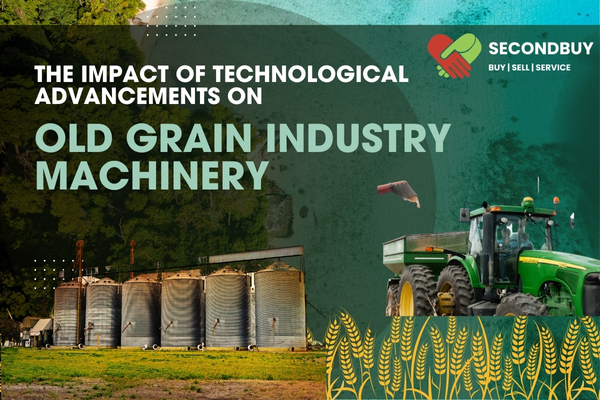The Impact of Technological Advancements on Old Grain Industry Machinery
The grain industry has been revolutionized by technological advancements over the years. The introduction of modern machinery has significantly improved productivity, efficiency, and overall operations in the grain industry. In this blog post, we will explore the impact of technological advancements on old grain industry machinery and how it has transformed the way grains are processed and handled.
Increased Efficiency
Old grain industry machinery was often characterized by manual labor and limited automation. However, with the advent of technological advancements, the efficiency of grain processing has witnessed a remarkable boost. Modern machinery such as combine harvesters, grain dryers, and automated sorting systems have streamlined the grain handling process, resulting in increased productivity and reduced labor requirements. These advancements have enabled farmers and grain industry professionals to handle larger volumes of grain with greater precision and speed.
Historical Context and Evolution of Grain Machinery
To comprehend the full scope of the impact, it's essential to examine the historical context of grain machinery. Old grain industry equipment, relying heavily on manual labor, has undergone a metamorphosis with the integration of advanced technologies, marking a paradigm shift in agricultural practices.
Enhanced Accuracy and Quality Control
The accuracy and quality control measures in the grain industry have significantly improved with the integration of advanced technology. Old machinery often relied on manual inspection, which was time-consuming and prone to errors. With the introduction of sophisticated sensors, computer vision systems, and data analytics, grain processing and quality control have become more precise and reliable. These modern technologies can detect impurities, measure moisture content, and assess grain quality parameters with greater accuracy, ensuring that only high-quality grain reaches the market.
Automation and Streamlined Operations
One of the most noticeable impacts of technological advancements is the automation of various grain industry processes. Old machinery required substantial manual intervention, which was not only labor-intensive but also prone to human errors. Today, automated systems and robotics have taken over many tasks, including planting, harvesting, sorting, and packaging. Automation has not only improved operational efficiency but also reduced the reliance on human labor, allowing workers to focus on more skilled and strategic tasks.
Precision and Quality Control Measures
The integration of sensors, computer vision systems, and data analytics has redefined accuracy and quality control in the grain industry. Moving beyond time-consuming manual inspections, these technologies detect impurities, measure moisture content, and assess grain quality parameters with unparalleled precision, guaranteeing that only top-tier grain reaches the market.
Data-Driven Decision Making
The integration of technology in the grain industry has facilitated data collection and analysis, leading to data-driven decision making. Modern machinery is equipped with sensors and software that gather valuable information about grain yield, quality, and environmental conditions. This data can be analyzed to optimize planting strategies, adjust irrigation schedules, and make informed decisions about grain storage and transportation. By leveraging data analytics, grain industry professionals can enhance their operational efficiency and make more informed choices that ultimately lead to improved profitability.
Remote Monitoring and Maintenance
Technological advancements have also enabled remote monitoring and maintenance of grain industry machinery. Internet of Things (IoT) devices and connectivity have made it possible to monitor equipment performance, detect anomalies, and schedule preventive maintenance remotely. This helps to minimize downtime, reduce repair costs, and ensure that machinery operates at peak efficiency. Remote monitoring also allows grain industry professionals to access real-time data and make timely interventions, further optimizing the overall production process.
Conclusion
The impact of technological advancements on old grain industry machinery old grain industry machinery has been transformative. Increased efficiency, enhanced accuracy and quality control, automation, data-driven decision making, and remote monitoring are just some of the benefits that modern technology has brought to the grain industry. As technology continues to advance, we can expect further improvements in grain processing and handling, leading to a more sustainable and productive grain industry.
By embracing these advancements, grain industry professionals can stay competitive, maximize their yields, and contribute to the global food supply chain effectively. The integration of technology with old grain industry machinery marks a significant milestone in the evolution of the grain industry, paving the way for a future that is more efficient, sustainable, and technologically advanced.

